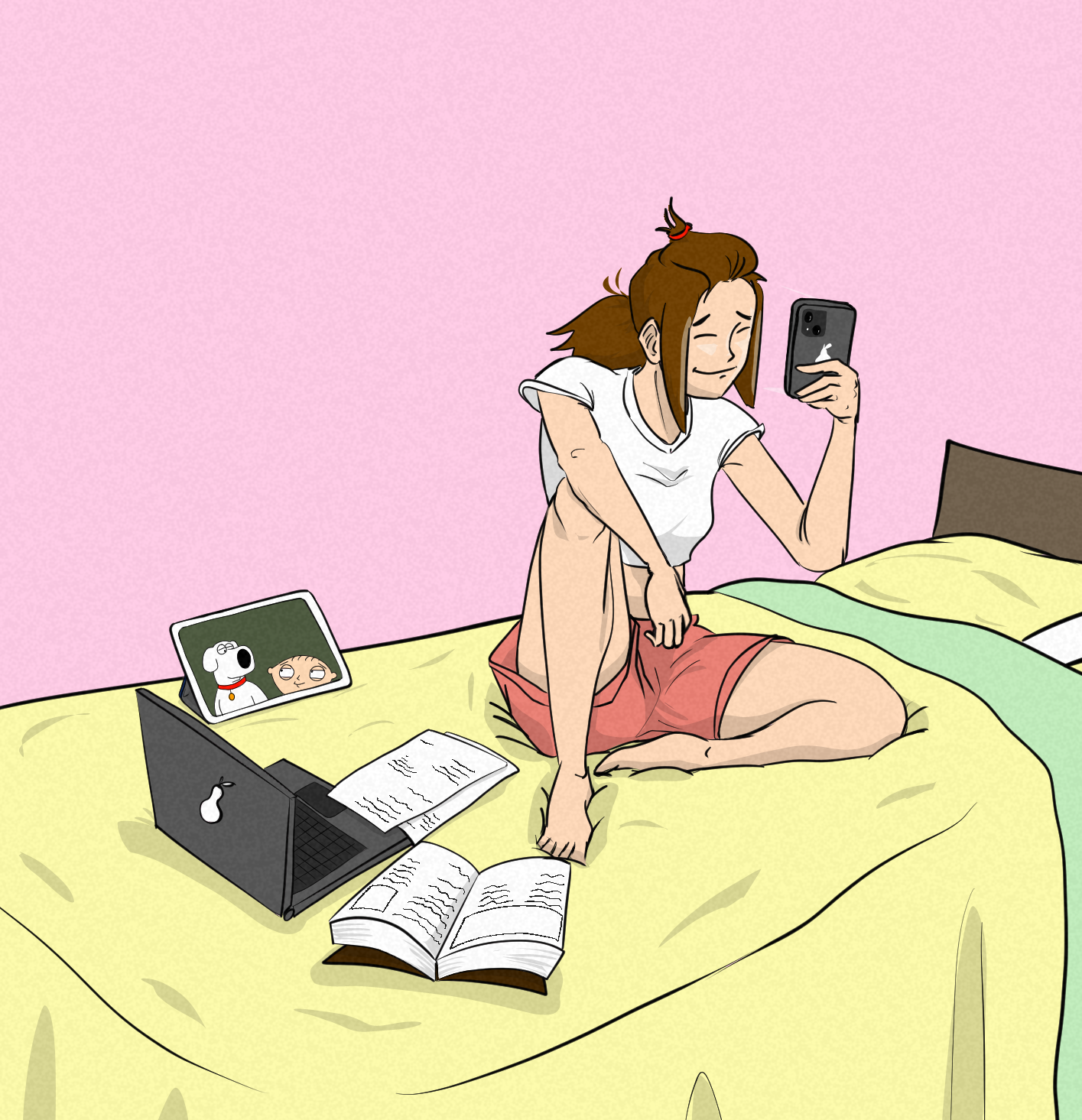By: Zainab Salam, Staff Writer
In this digital age, screens are central to nearly every aspect of our lives: work, education, entertainment, and socialization. While technology offers unprecedented convenience and connectivity, it also brings the risk of screen addiction.
While not officially classified as a disorder, there are various types of screen addiction, ranging from social media addiction, gaming addiction, streaming and video addiction to multi-screen addiction. These are very real addictions that go beyond enjoying a few hours of screen time a day. According to a certified addiction professional, screen addiction “is identified by a compulsive need to use these electronic devices, regardless of the negative impacts on daily activities and obligations such as work, school, or social relationships.” Some symptoms of screen addiction are being irritable, anxious or angry when you step away from the screen, spending beyond your means on screens (buying new devices or new games for example), and not being honest with other people in your life about how much time you spend on screens.
Like most things in life, screen addiction rarely exists in isolation. Often, it serves as a coping mechanism for other, more profound challenges. Many people turn to their devices not out of mere habit but to escape stress, loneliness, or feelings of inadequacy. For example, video games provide a sense of accomplishment that might be missing in real life. Understanding the root causes, potential harms, and triggers of screen addiction can help us take more deliberate control over our screen use.
As a budding psychologist, I observed how professors frequently highlighted marketing psychology as a potential career path. Applying psychology to marketing and branding underscores how principles of this science can be harnessed not just for well-being but also for profit; a reality vividly illustrated by the phenomenon of screen addiction. Screen addiction can be understood as a byproduct of the “attention economy,” where platforms are designed to captivate users’ attention for profit. Profit which is gained through selling ads — the more we scroll, the more data companies collect about our likes and spending habits, which they sell to advertisers. This economic model manipulates human psychology, keeping users hooked while often worsening their mental well-being.
Social media platforms are designed to keep users engaged. Through analyzing user data, software engineers, with the aid of psychologists, design algorithms to “create customized feeds, recommendations, and experiences that keep users on their platforms.” Studies have shown that interactions such as likes or mentions stimulate dopamine release, creating reward cycles. These bursts of dopamine are frequent in short-form media content, which is why platforms like TikTok “drive the formation and sustenance of addictions to the platform.” However, prolonged exposure to fast-paced, highly stimulating content can also lead to cognitive impairments, reducing attention span and making focused thinking more challenging. Time distortion is a significant issue where users lose track of how long they have been engaged with a device.
“It’s important to develop a healthier relationship with screens. Where they serve rather than dominate. This balance is essential to preserving mental and physical well-being.”
Screen addiction doesn’t just consume time; it has measurable physical, social, and psychological impacts. Socially, the excessive use of screens can erode relationships. In situations where a person is highly focused on their screen while ignoring those around them, it can lead to damaging personal connections. Mentally, it can lead to anxiety, depression, and loneliness. The constant influx of information, combined with the social comparison often inherent to social media use, can lead to a deterioration in self-esteem. Physically, it can cause eye strain, disrupted sleep, and a sedentary lifestyle. Screen addiction can also interfere with interpersonal interactions, reducing face-to-face communication skills.
Overcoming screen addictions requires a multifaceted approach that addresses both the triggers of excessive screen use and the underlying emotional or psychological factors. Recognizing personal triggers is a crucial step, whether it is stress, boredom, or loneliness and replacing screen time with healthier activities can significantly reduce dependency. Setting clear boundaries, such as scheduled “screen-free” periods or using apps to monitor and limit screen time, can help us become aware of our habits. We can also benefit from digital detox periods, where we consciously disconnect from devices. This can be especially effective when combined with offline activities that provide a sense of accomplishment or social connection.
In addition to self-regulation strategies, social support and alternative therapeutic approaches can be transformative. For example, nature-based therapy, where time spent outdoors not only reduces screen use but also enhances mental well-being through natural sensory engagement. In other words, enjoying nature can help you exist in the moment and not focus on your screen as much. In more severe cases, cognitive-behavioural therapy can help people recognize negative thought patterns and develop healthier coping mechanisms. Lastly, engaging in digital literacy, learning to critically engage with content and understand the manipulative design of apps, can help us make intentional choices about our screen use.
Screen addiction often reflects deeper issues rather than a mere love of the screen. Understanding this addiction requires us to look beyond the device to our stressors, habits, and environment. By acknowledging the root causes, recognizing the signs, and consciously managing leisure screen use, we can take back control from our devices and live more balanced lives.
Instead of defaulting to passive scrolling or binge-watching, consider strategies like mindful scheduling, where you allocate time for entertainment, and digital hygiene, which involves turning off non-essential notifications. It’s important to develop a healthier relationship with screens. Where they serve, rather than dominate. This balance is essential to preserving mental and physical well-being.

